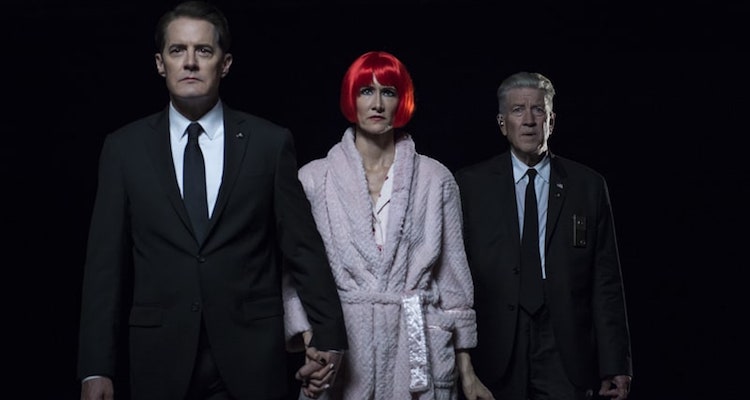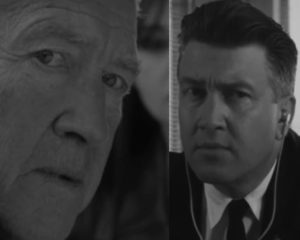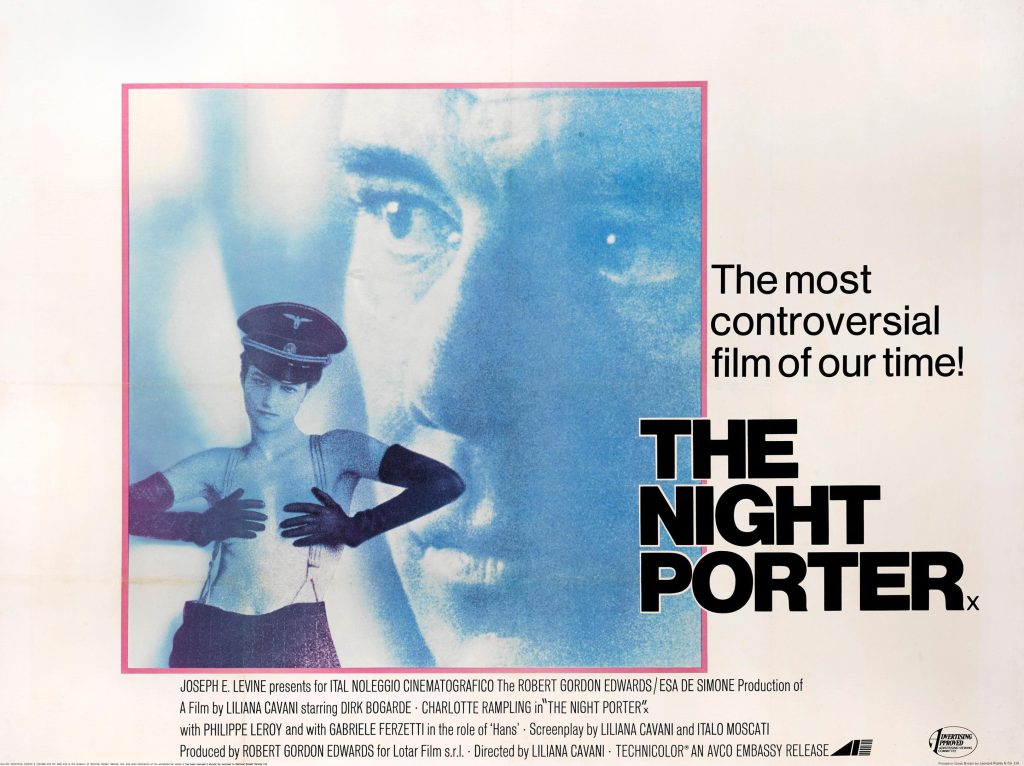Twin Peaks: The Return managed to both exceed and confound its viewers’ expectations. This feat is doubly impressive considering how little was known about the plot or structure of the show before it aired beyond Showtime CEO David Nevins’ description of it as “an emotional story about Cooper’s odyssey back to Twin Peaks.” That, along with the series subtitle — The Return — proved more literal than anyone anticipated.
The season turned out to be an emotional odyssey not only for its characters or its audience, but also for the man behind it all (alongside co-creator Mark Frost), David Lynch. Twin Peaks: The Return, taken as a whole, serves as an epic and personal look back across his entire career, something that is made apparent in the myriad themes, visuals, musical selections, casting, and possibly even characters that appear in his films and art outside of the Twin Peaks canon.
BODY HORROR
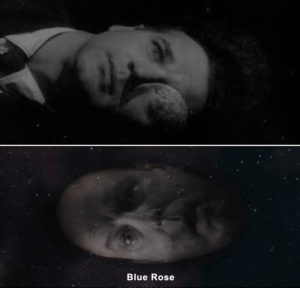
From his very first experiments with film — the 1966 looping animation (or “moving painting,” as he refers to it) Six Men Getting Sick, through to his first feature Eraserhead (1977) and beyond — David Lynch has been obsessed with the violent traumas and transformations of the body, citing the paintings of Francis Bacon and the writings of Franz Kafka as two influences in this regard.
This season of Twin Peaks saw Lynch’s most gonzo expression of this motif yet, featuring all types of decapitations, mutilations, expectorations, mutations, bodily invasions, and violent transformations. Many shots (such as Major Briggs’s disembodied head floating through space) directly mirror those from earlier films, while Lynch’s homages to the above-named influences are more noticeable than ever. (Of note: the Kafkaesque frog-bug critters that show up in Part 8 come directly from Lynch’s script for an unproduced movie called Ronny Rocket.)
“WHO DO YOU THINK THAT IS THERE?”
Lynch has always used body horror to explore one of his main thematic obsessions: the fracturing of identity. Characters in his films often undergo psychic, spiritual, and even physical schisms after experiencing trauma, with manifestations that include possession (Twin Peaks: Fire Walk with Me [1992]), doubling (Lost Highway [1997]), dual realities (Mulholland Drive [2001], Inland Empire [2006]), or straight-up body-switching (as in Lynch and Frost’s early unproduced script One Saliva Bubble, which has several characters that could be fairly judged as early templates for The Return’s Mr. C, as well as the Jones family).
This idea finds its apotheosis in Twin Peaks: The Return, in not only its central plot (the slow-building collision between the good and evil versions of Cooper), but also its darkest, most unsettling concern: the fracturing of several characters’ personalities (Diane, Audrey, even Sarah Palmer) as a direct result of the atrocities done to them by the living spirit of evil as embodied by Bob/Mr. C.
This concept is even given a specific name here (Tulpa) and is made explicit in a way it never has been before. Here we finally see in full all of the cosmic wormholes, floating spirits, teleportation and magical alchemy that Lynch has previously only hinted at via the bursts of electricity and flashing strobe lights that appear throughout his work.
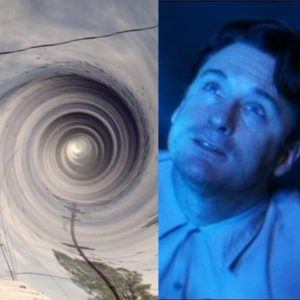
“WE’VE ALREADY MET, DON’T YOU REMEMBER?”
When a character is asked the above question by The Mystery Man (Robert Blake) early on in Lost Highway, we get the sense that we ourselves are being asked. That’s because The Mystery Man is one of several supernatural embodiments of evil that appear throughout Lynch’s oeuvre, all of whom are able to invoke so similar a sense of otherworldly dread that many viewers hold a theory that they exist in a shared universe.
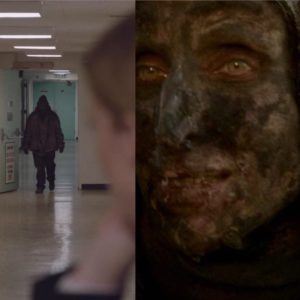
While such fan-theories tend to be simultaneously reductive and overreaching in most cases, boiling art down to a set of clues as though everything is a puzzle to be figured out, with Lynch there might actually be something to it, if only because A) Lynch himself has indicated as much on occasion (saying in the book Lynch on Lynch that characters from Lost Highway and Twin Peaks come from “the same place”), and B) if you’re going to make the case that two separate stories occupy the same canonical space, you can do worse than to point out that they both feature sneaky soot-covered hobo demons.
From The Man in the Planet in Eraserhead, through to Bob and the denizens (including an early version of this seasons Woodsmen characters) in the original run of TP, the trio of voodoo killers in Wild at Heart (1990), The Mystery Man in Lost Highway, The Man Behind the Dumpster in Mulholland Drive, and the Phantom in Inland Empire, Lynch has always been able to give embodiment to our most primal fears. In The Return’s mind-blowing Part 8 (and via the subsequent mythology of “Judy”), he finally gives them something resembling an origin story.

It is not only Lynch’s supernatural demons and monsters that receive callbacks here, but the human ones as well. Richard Horne, the product of Mr. C having raped a comatose Audrey Horne, is extremely reminiscent of Lynch’s first truly great villain, Frank Booth, from Blue Velvet (1986). Not only does the actor (Eamon Farren) playing him resemble a young Dennis Hopper, but his uncontrollable, almost child-like violent rages — shown to be a result of deep insecurity — are similar to those of his predecessor, right down to the threats they utter (“You wanna f*** me?” / “Baby wants to f***!”).
Dark as this particular thread is, it is also given a hilarious meta-commentary during Part 13, when Mr. C tracks down one of his enemies at a place known as “The Farm,” a sort of clubhouse to a host of various underworld types who, for as threatening as they may look, turn out to be nothing more than overgrown pups playing at being big bad wolves. It’s easy to picture various other comic villains from Lynch’s films — Bobby Peru from Wild at Heart, the inept hit man from Mulholland Drive (whose bumbling murder spree is also recalled by Ike the Spike’s office rampage in Part 6) — as belonging to this would-be island of lost boys.
THE ROADHOUSE IS PROUD TO PRESENT…/STARRING KYLE MACLACHLAN/ IN MEMORY OF…
Lynch has always been a loyal filmmaker: loyal to the people he casts, loyal to members of the production crew he’s worked with, loyal to the artists he collaborates with on other projects.
We see that here in one of the show’s most surprising, and fun, aspects: the musical guests (perhaps an allusion to Lynch and Frost’s forgotten and short-lived network show On the Air, which followed the behind-the-scenes chaos of a weekly televised musical variety act). While several of the guests seem chosen simply because they fit aesthetically with tone of the show (The Chromatics, Sharon Von Ettan), the appearance of others come with more weight thanks to the history they share with Lynch. Rebekah Del Rio turns in a performance that almost rivals the one she gave in Mulholland Drive, while appearances from the likes of “The” Nine Inch Nails and Eddie Vedder (aka Edward Louis Severson) call to mind their previous collaborations with Lynch.
Much of the same can be said for the show’s new cast members, many of whom have worked with Lynch before. These include Balthazar Getty showing up in a role similar to his antagonist from Lost Highway; Naomi Watts’ receiving the domestic bliss she is so bitterly denied in Mulholland Drive; and Robert Forster finally getting to play a lead lawman after losing out on the chance to play the original Sheriff Truman, as well as having his role as a detective in the pilot for Mulholland Drive cut short.
Laura Dern is the most obvious example of this form of casting. Having appeared in three of Lynch’s other films, it’s no surprise she’d show up in a large role here. But by casting her as the previously unseen Diane, thus tying her performance to Kyle MacLachlan’s as well as his own, Lynch is making a direct connection to their previous work together.
While it was vindicating to see returning cast members such as Sheryl Lee, Dana Ashbrook, and James Marshall get their moments to shine, it’s Kyle MacLachlan who proved the biggest revelation — which only makes sense, seeing as he served as Lynch’s hero/muse/doppelganger from the disaster that was Dune, through the career resurgence of Blue Velvet, through to the height of both men’s mainstream success with the original Twin Peaks. It’s hard not to look at the material that Lynch gave him here and not feel like it was part of the latter’s intention to build a showcase for the actor who — alongside Laura Dern, also present — has proved to be his greatest onscreen collaborator.
That same sense of devotion — albeit one tinged with sadness — can be felt most acutely during the end of the credits for several of the episodes, in the dedications to various late members of the original cast, some of whom have turned in the final performances (Miguel Ferrer, Catherine Coulson) or make posthumous appearances (Frank Silva, Don S. Davis, Jack Nance, David Bowie). This aspect of the series has made us feel the weight of time and mortality in a way that few other shows ever have.
THE SLEEPER MUST AWAKE
It is finally Lynch himself who truly personifies that weight. In examining exactly how he does so, it behooves us to quickly consider the film of his that is most often disregarded: Dune.
While clearly being the least personal of all of his movies, Dune nonetheless fits into Lynch’s overall vision thanks to the story’s central mythology: that of “the sleeper [who] must awake.” This, along with the idea of ever-expanding worlds to explore, is what drew Lynch to the project. It is interesting to consider that Lynch’s professed desire to tell an epic, cosmic, and ultimately personal story finally came to perfect fruition some 32 years later.
That idea about the sleeper who must awaken is especially prevalent, not only in how it relates to the main arc of Dale Cooper in The Return, but also — even more importantly — to Lynch himself.
While it was noted in the lead-up to The Return that his character, FBI Deputy Director Gordon Cole, would have an increased presence this time, it nonetheless came as a surprise just how central he would be to the story. Luckily, Lynch proved up to the task as an actor, even as he’s increasingly turned Gordon Cole into a thinly veiled version of himself, from his love of nicotine and wine, to his artistic skills, to his entirely self-aware attraction to younger women.
Watching Lynch in the role of Cole (revealed to have been named after an ancillary character from one of Lynch’s most oft-cited cinematic influences, Sunset Boulevard, which receives a call-out during an important moment in The Return) reckoning with his legacy after all these years, we get the sense that Lynch the artist — indeed, Lynch the man — is forcing upon himself a similar reckoning.
The strongest evidence of this comes in the form of a dream he recounts to his colleagues — an apparently recurring one featuring the actress Monica Bellucci as herself — in which she asks him the question: “We are like the dreamer who dreams, and then lives inside the dream … but who is the dreamer?”
This is followed by Bellucci indicating that Cole should look over his shoulder, and when he does he — and we in the audience — are confronted with an image of a much younger Cole/Lynch.
The series ended with this question — “Who is the dreamer?” — still lingering, our personal frustration at the lack of resolution given voice by Laura Palmer’s epic scream. But of course the answer can only have ever been one person: David Lynch.
The Return proved more than just David Lynch’s odyssey back to the world of Twin Peaks. It was nothing short of his odyssey through this ultimately unsettling dream that he’s lived in for the past 50-plus years, one which, in the end, he still refuses to wake up from.
Zach Vasquez lives in Los Angeles, where over time he’s become known as “Judy.”
